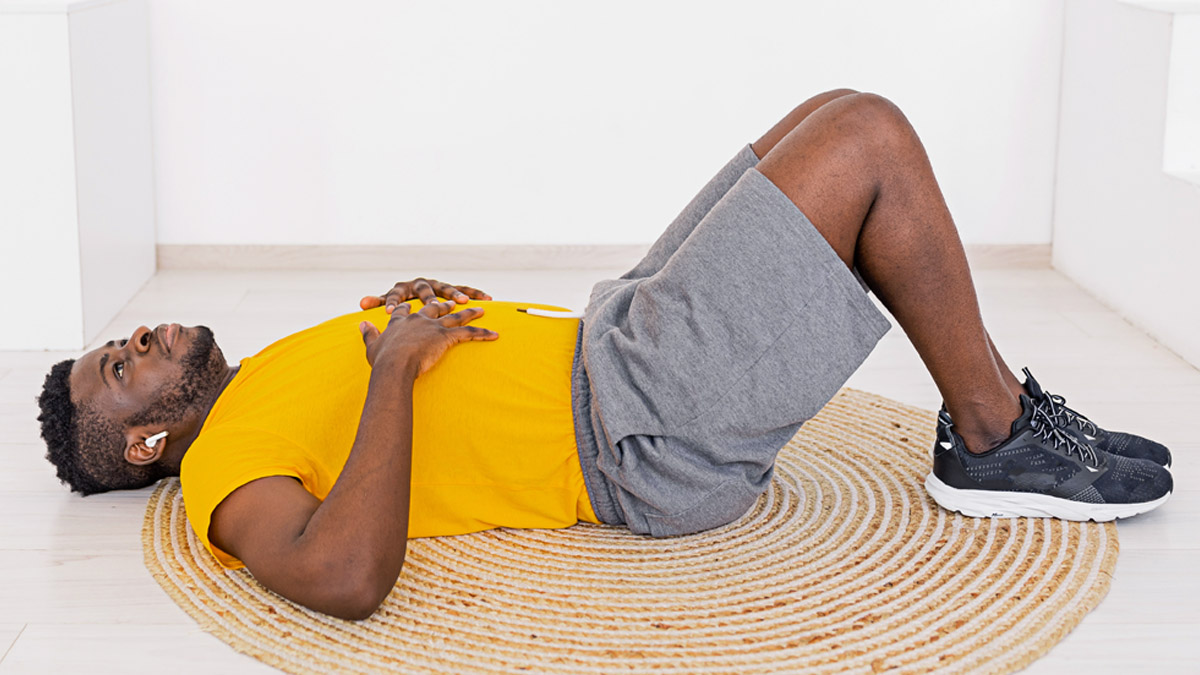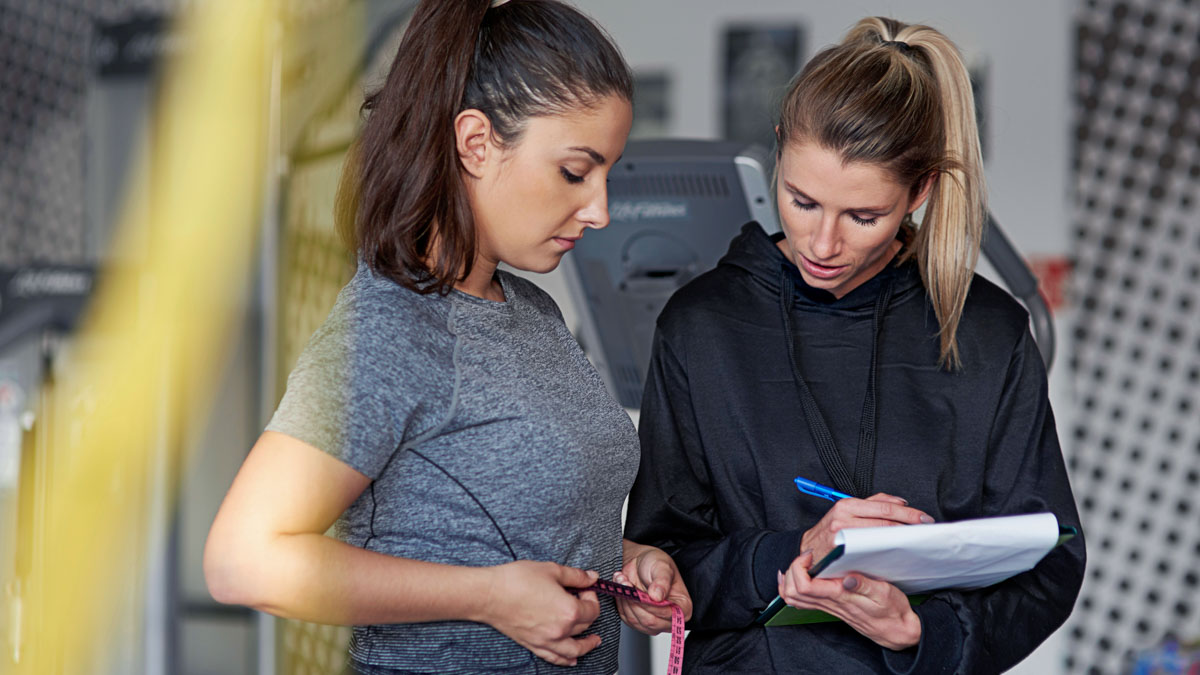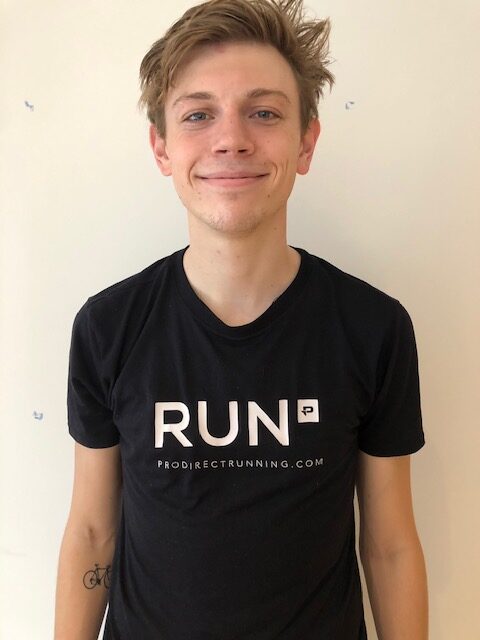As more endurance athletes look to strength training, with performance improvement being their main goal, it becomes even more important that we, as coaches, better understand the types of strength training approaches we need to employ to get them there.
But with the vast amount of information available to our clients and athletes via social media and the internet, it can be incredibly difficult to decipher the “good information” from the “not applicable information.” Especially with the appeal of good-looking male and female “fit-fluencers” touting fancy and exciting-looking exercises that offer extremely little to zero benefits, our work is cut out for us!
In this article, we will build atop the foundation of my previous two essays- Why Balance Training is Not Core Stability Training which spoke about improving your clients’ proximal stiffness for sports performance, and The Science of Breathwork for Cyclists: Better Performance & Mobility, which was an introduction to the importance of focused, purposeful breathwork as part of a sports performance program. In this essay, we will talk about the importance of exercise prescription. This layers atop the previous two articles to help you build a better, more up-to-date mental model of what we need to build sports performance, not gym strength.
When Exercises Are Not Just Exercises
Unfortunately, much of the information on strength routines for endurance athletes available on the internet these days will only leave you or your athletes tired without adding much to their on-bike or triathlon abilities. Sure, they’ll do “cycling-specific movements” and “sport-specific movements.” Hyperbole for “doing the exact same things you’re already getting tons of, just more, harder!”
Gee, that sounds nice, but how will that help your clients counterbalance the highly repetitive demands of their sport to allow their bodies to move better, feel better, recover better and perform better?
You may think I’m cheeky here, but I’m not.
“Any idiot can make someone tired. If you want a program to get you tired, do 10,000 jumping jacks. You will be tired, but you won’t be better. Training to get better at something is a whole different story.” -Dan John
Anyone can “give you a workout” that makes you tired, sore, and “feel like you did something.”
- Heavy squats and deadlifts feel great for our ego.
- Isolation work like seated leg extensions and tricep pushdowns leave us feeling like we really worked.
- Bicycle crunches, planks forever and Russian twists leave our bellies burning and “feeling worked.”
However, for already high-energy-demand sports like cycling and triathlon, these choices often reduce our performances rather than improve them.
It is like buying a Huffy bike from your local Toys R Us and then McGuyver-ing on a pair of Zipp 404 Firecrests to tackle your upcoming IRONMAN.
Good luck with that.
Exercises, in the context of endurance athletics, can, and in this author’s opinion, should be, prescriptive tools for use with our athletes and clients, allowing us to program the body to become better and more efficient in how it works. But in order to gain these performance outcomes, egos must be left at the door, and a significant focus put on HOW one is executing the exercise:
- Body positions and postures.
- Keeping stiffness where we need it, in the right amounts and in the right places
- Loading only enough to get the desired response
- Not looking at the previous week’s numbers but instead going by feel (Via RPE or Reps in Reserve)
- Seeing each strength session as an opportunity to write a better movement program
Second most important of these is to load the movement “just enough,” which usually will be to a perceived exertion of 7-8 (on a 1-10 scale). Meaning your athlete will finish each set feeling that they still have 2-3 extremely high-quality reps in the tank.
This approach is a far cry from what many are doing in their strength training. It is still falsely believed that “for it to work, it needs to hurt and be hard!” Essentially, pushing to near failure or completely failing on each set. Other approaches, such as squat ‘till you puke or can’t walk down the stairs tomorrow and “isolation exercises” for specific parts, are also very prevalent.
That is not strength training from which we will see performance improvements — at least not in an energy and time-efficient manner — and they certainly will not quickly build resiliency.
We’re about to dive into an overview of strength training for performance in endurance sports, which I’ve been honing and refining over the last 17+ years. While the process of working with each athlete I’ve coached over those years has afforded me the opportunities to experiment and test out different hypotheses, it really came together as I put together the “Strength Training for Cyclists Certification Course” in 2018 and wrote my “Strength Training for Cycling Performance” book. I don’t say this to impress you but to impress upon you the importance of writing your programming and your “why” behind programming for that athlete that way. One gains a fantastic amount of clarity of thought process when writing it all out and building your training approach.
Should you do this for all athletes and programs? Probably not, as you’re most likely already pressed for time. Best to start this with one athlete and write out your “why” and thought process each time you program for them. Review this monthly or quarterly, and you can be amazed at how much faster you progress as a coach.
When writing strength programs for performance, we can think of exercises as doses of either a health-boosting elixir or small doses of venom. When done in small doses and in the right way, venom makes the antidote…but overdo it, or in the wrong order, it can become a more potent venom.
Health-boosting elixirs are movements and postures which the individual can easily get into and has decent control throughout, with appropriate loading.
Venom comes from movements and postures, which expose individual weaknesses.
The key to this concept of health-boosting or venom? It depends on ONE individual. The one in front of you. Your athlete.
Each individual will present unique movements, postures, strengths and weaknesses. As such, you must determine what is health boosting and what is venom through a basic assessment. You can see a sample of a Static hinge assessment here by scrolling down to the “Athlete Assessment” Module.
Once you have finished and reviewed the assessment, the next step is to build the plan. While tackling 15 different areas in a single program can be tempting, this will lead to very little being accomplished. Instead, by looking at exercise selection, pairings, order, loading, and rest periods (along with what one cue and focus to place on that movement), we are able to build a more athletic and capable individual who can better demonstrate their full capabilities while staying healthy and resilient.
Benefits
Following the Strength Training for Performance approaches can significantly benefit you and your athletes, but they take time. It can take 3-8 weeks to start showing up and 12-18 weeks to be solidified.
The results will trend towards more repeatability in the individual’s power outputs at first, largely due to their improved efficiency and abilities to maintain good postures and positions for longer and less effort. Often, but not necessarily always, we’ll see increased power outputs for the 3-second through 10-minute efforts, so long as their in-sport training program is progressive and allows appropriate time and, just as importantly, energy for adaptations to occur.
Some current examples of the performance improvements for some of those I’ve worked with:
- 14% increase in 5-sec power (12 weeks, 49 years old, 10 years cycling competitively)
- 13% increase in 1 min Peak Power (8 weeks, 55 years old, 15+ years cycling competitively)
- Increase in repeatability of 1 min power going from 3 repetitions to 7 repetitions, with HR recovery time dropping under 90 seconds (8 weeks, w/ on-bike specific intervals and strength)
- 5.2% increase in 5 min Peak Power (10 weeks, Strength only, Base Riding)
- 2.5% increase in 10 min Peak Power (8 weeks, Strength only, Base Riding)
- 2.2% increase in 20 min Peak Power (6 weeks, Strength only, Base Riding)
These are real and reasonably common improvements seen from a strength training for performance program.
Note that three of these improvements came during base, with very little intensity in their riding, and these improvements are significant as they are for four different riders, each of whom already had a good aerobic engine and more than three years of regular, year-round in-sport training.
Yes, some of those improvements will come from a slightly bigger engine from base training; however, these improvements are above what would be considered “normal,” especially considering the athletes for the 10 min and 20 min peak power improvements had been “stuck” for the last 12-18 months with their FTP — thus they are looking for a strength training for performance program to help break out.
While I would love to say that these improvements came from “just strength training,” the truth is that it’s from their programs working on improving their breathing, strength, and improving their abilities to create appropriate proximal stiffness to better and more efficiently express their power and athleticism from their hips and shoulders.
These are not different, unrelated pieces but rather highly interrelated and correlated parts of a single organism, which must be developed as a whole in chorus.
Exercises to Help Build Stiffness, Power & Athleticism
Before we can dive into some specific exercises, first, it’s best to understand how to build the foundations for athleticism by building a sound and truly athletic “core.” You can read about that in my previous essay on the topic here on TrainingPeaks.
Skipping the building of the foundations will leave you and your athlete with fewer returns on the work you’ll put in with these three exercise pairings and also leaves the door open for injury. Do the due diligence, and move to lay the foundation before trying to build the skyscraper of performance.
For Better Posture, Force Management and Power Efficiency:
Deceleration + Proximal Stiffness + Thoracic Extension w/ Scapular Control
Snap-Downs + Can Crush + Wall Scap Slides
Teaching the athlete how to appropriately decelerate while keeping ideal joint positions allows for improved connective tissue strength, proprioception and neural recruitment while reinforcing a healthy and balanced guy-wire system of the “core.” In short, learning to decelerate allows the individual to better deal with external forces acting on the body.
This is an important skill; each individual needs time to learn these focused repetitions. To help shorten the learning curve and improve the exercise returns, we pair it with a “proximal stiffness” drill where we challenge the individual to keep appropriate stiffness + posture around a single moving body part with the Can Crush exercise.
We finish this exercise prescription by targeting a “weak link” that can offer big rewards for overall human function. In this case, we use the wall scapular slide exercise, which hits the commonly sub-par mid and lower trapezius muscles while teaching the individual to stay stiff through the rest of the body, removing any compensations they may try.
Together, these three exercises teach appropriate core (everything between the neck, elbows and knees) stiffness, movement from the hips and stability for overhead movements. There is an emphasis on “the posterior chain,” but note that there is zero hinging or “deadlift-like” movement.
For Improved Power and Recovery:
Hip Power + Thoracic Extension w/ breathing
High Hang Wall Ball Toss + Preacher Stretch
While Olympic lifts are incredibly technical and require a lot of hands-on, in-person instruction and coaching to become proficient at, we can (and should) use different but similar movements to help teach our clients and athletes how to move with more athleticism.
Two of my favorite exercises, which lower the technical aspect (but still require teaching!) while allowing the learning of athleticism, are the Russian Kettlebell Swing and the High Hang Wall Ball Toss. The challenge for the High Hang Wall Ball Toss is learning to move through the hips while keeping appropriate stiffness throughout the body. For cyclists and triathletes who are used to sitting with their hands on the handlebars, learning how to keep their shoulder blades and upper backs in the proper position can allow them to tap into power they already possess but have yet to learn how to access.
Paired with the Preacher stretch, which is primarily a breathing exercise that also drives mobility for the upper back and lats while teaching a proper hip hinge, this combination can be a bit of a Swiss Army knife of sorts, as depending on where in the training day we place them, and what emphasis we coach, can allow for a broad range of outcomes- but all based around improving recovery times on the bike, and seeing an increase in power output across nearly all time frames.
Less is more with this pairing! Assigning 3-4 sets of 3-5 repetitions with a very light (2-4kg) wall ball and 3-4 sets of 5-6 breaths for the active preacher stretch is functional.
For Improved Climbing + Control:
Hip Strength + Power w/ Control
B-Stance Hex Bar Deadlifts + Hands on hips Box Jumps
Climbing often separates the top tiers of road cyclists from the rest. And while climbing is often thought of as purely a watts-per-kilogram endeavor, there is much skill involved in climbing as well. Within that climbing skill is management of tension and stiffness throughout the entire body as the rider fights to be the first to summit.
We tend to think of our hips as a single, solid structure, but it’s comprised of three bones: The sacrum and two halves of the pelvis. These are connected at the front through the pubic symphysis and at the back through the sacroiliac joints. Both sides of the pelvis move separately as we walk or, in the case of climbing on the bike, pedaling.
To help improve control through this movement, we want to add some type of single-leg movement. While many will jump to a single-leg squat or lunge, these often take the leg and hip into positions where the demands on the joints will not be as close to the end task.
Please keep in mind that everything should not be “sport specific” in a strength program, as in our strength program, we are often counteracting the massive time spent in these highly repetitive positions and movements. However, in this case, the B-Stance Hex Bar Deadlift will allow us to build strength and resilience for the demands of climbing, as the position is similar in its demands:
The front of the legs hip is loaded in nutation, while the back leg is unloaded for balance and in counter nutation. This allows us to work on the individual’s ability to maintain enough stiffness through the rest of the body while one leg works with the hip loaded.
The hands-on-hips box jumps allow us to create a stronger mind-muscle connection, as the hands being on the hips does not allow for any tissue stretch or momentum to be generated, which means the only solution available for the athlete is to create more power via a stronger neural pulse (firing).
Be sure the athlete is getting full hip extension off the ground and landing softly and quietly on the box, as this reinforces the landing mechanics and improves athleticism through the double-neural pulse needed to both take-off and land.
Conclusion
As you begin to dive into the world of Strength Training for Sports Performance with an eye on strength training programming being prescriptive, it is absolutely vital to bear in mind that exercise selection must be made on an athlete-to-athlete basis and that the EXECUTION of the exercise, or HOW you perform the training, is where 70% of the benefits will come from. Simply dropping in pairings of exercises without a focus on how the individual is performing them leads to below-average results, as instead of re-wiring the “software” of the nervous system to be more effective and efficient, you’ll simply be laying strength on top of poor movement habits.
As with all sports performance training, the devil is in the details, and those details must be given to an athlete with clear attention as you implement the program.
It is simple, but it takes work.
Taking the time to educate your clients and athletes about the importance of technique, posture, and positioning for their strength exercises to turn their focus to how they perform each repetition can, and will, pay off in significant returns where it matters most. If you have questions, my inbox is always open, and I’d be happy to hear from you.








